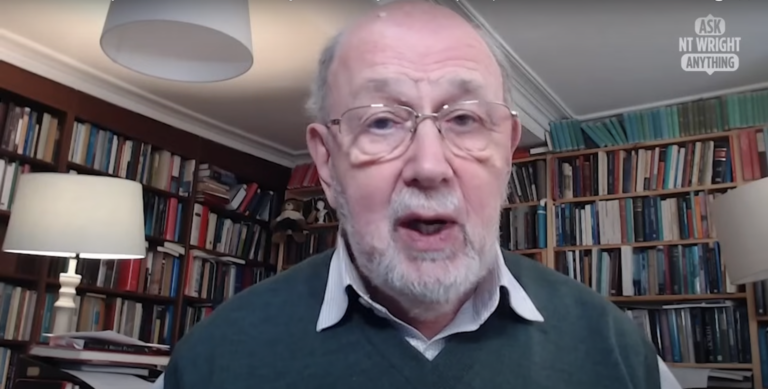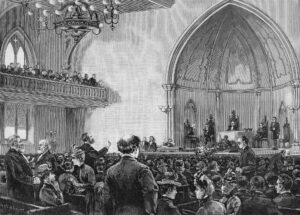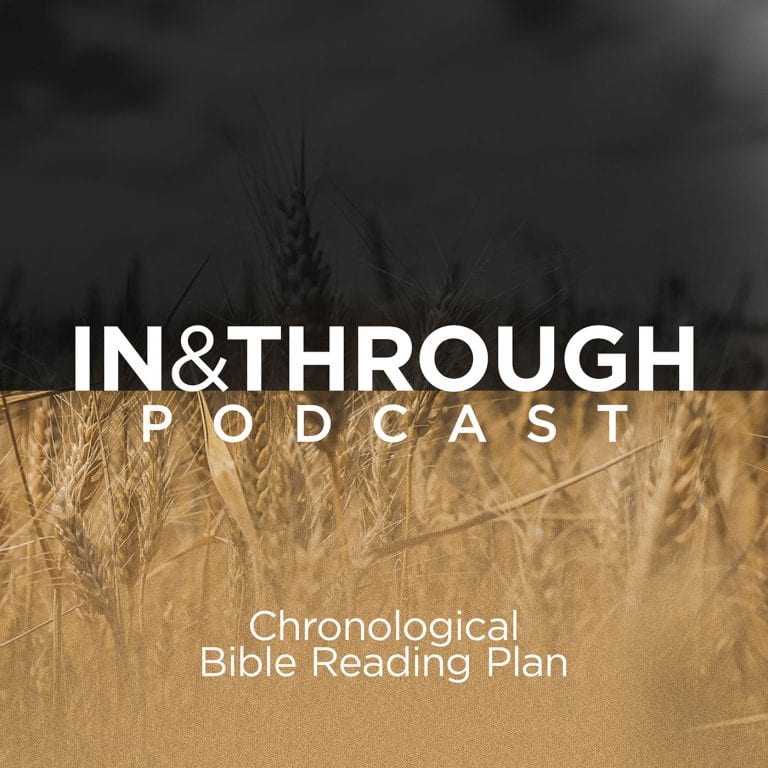Note from the editor: Canadian Evangelicals have largely lost their voice in the public sphere of Canada. It hasn’t always been this way. The pathway toward a distinctively Canadian secularism is an interesting story. Regaining some of what was lost will require us to understand that story and then to move forward in humble and yet decisive engagement in a country that has lost its way. There is almost none better suited for this task than Don Hutchinson, a man who has an intimate knowledge of the rise of Canadian secularism and the nature of religious freedom in our land.
Sir Wilfred Laurier, Canada’s seventh Prime Minister, famously said, “The 19th century was the century of the United States. I think we can claim that it is Canada that shall fill the 20th century.” Those taking hold of Laurier’s claim have frequently reduced his statement to simply, “The 20th century belongs to Canada.”
Shortly after winning the 1891 election, Canada’s founding Prime Minister Sir John A. Macdonald suffered a stroke and days later died. Five years later, his Conservative Party was still in disarray. On their fourth leader (and fourth Prime Minister) since Macdonald, the Conservatives fell to Laurier’s Liberals in 1896. Laurier would win four majorities in succession and lead the nation for fifteen years.
He had good reason for hopeful words about the future. Little more than three decades old, the original four provinces that linked together to form Canada at Confederation on July 1, 1867—Upper Canada (Ontario), Lower Canada (Quebec), New Brunswick and Nova Scotia—had been joined by Manitoba (1870), British Columbia (1871) and Prince Edward Island (1873). In addition to Manitoba, the process was in place to establish the provinces of Saskatchewan and Alberta out of the then vast Northwest Territories, acquired by Canada in 1870 from the Hudson’s Bay Company. A Mari usque ad mare, from sea to sea, the last spike in Canada’s transcontinental railway had been hammered home November 7, 1885. And Laurier had approved construction of a second and a third!
The Canadian Church in The 19th Century
The political and industrial optimism of the nation extended to the Canadian Church. In 1867, Catholic and Protestant churches had their right to operate denominational schools secured in the British North America Act (now known as the Constitution Act, 1867). This security for future generations was repeated as each new province joined Confederation. The transcontinental railway system, with multiple provincial spur lines, introduced opportunities for evangelism and expansion from both east and west across the prairies.
Denominations sought ways to transition from colonial and regional activity to establish their presence throughout the budding nation. In his book, The Church in the Canadian Era, John Webster Grant described the challenge faced by the Church to keep up with the rapid progress. A number of theologically related denominations merged to facilitate administration of a national presence. Canada’s churches were enthusiastically engaging their membership in the formation and growth of the nation.
E.C. Woodley, in The Bible in Canada: The Story of the British and Foreign Bible Society in Canada, tells how the para-congregational British and Foreign Bible Society (BFBS), founded in 1804 by a small group of Christian leaders including British Member of Parliament William Wilberforce, expanded with Church and nation. At an early meeting of the BFBS, the decision was made to publish the Gospel of St. John in Mohawk. Active engagement in what would become Canada quickly followed. With Confederation, railways and substantial Indigenous and immigrant populations, the work of Bible distribution and translation multiplied. In 1904, fourteen independent auxiliaries of the BFBS joined together to form the Canadian Bible Society (CBS). CBS would find a place in the hearts of many through its supply of New Testaments and Bibles in a variety of languages to Canadian and other allied troops and prisoners of war in World Wars I (270,000) and II (798,000). The available selection of translations had been developed to meet domestic needs resulting from burgeoning, mostly European, immigration.
The Canadian Church in The Early 20 Century
The Great War saw Canadians flock to churches to pray for victory. Whether because of answered prayer or seeking continuing comfort for lost loved ones, they stayed at war’s end. Those who returned from the front sought out similar support at home as had been provided overseas by chaplains, the Red Cross, The Salvation Army, and the CBS Bibles.
The national growth spurred a uniquely Canadian merger in 1925. The Methodist Church, Congregational Church, and two-thirds of Canada’s Presbyterian congregations joined together to form the United Church of Canada. At union, the United Church became the largest Protestant denomination in the country, quickly displacing the Anglican Church as the primary Protestant voice to counter that of the Roman Catholic Church in both politics and culture. Other potential church mergers, including between the Anglican Church and the new United Church, would be discussed actively among Protestant leaders for another half century.
Even the Great Depression of the 1930s could not slow the overall progress of Canada’s Church. Congregations and para-congregational missions became the backbone of both voluntary and government networks of meeting human need.
My stepfather soldiered at the front in World War II. He used to say that there were no atheists in a foxhole. However, that sentiment did not necessarily carry back to Canada with those who came home. World War II resulted in what had been known as The Great War being retitled as World War I. Questions about global political and military stability were rampant, as were mounting fears of a World War III. Trends in church attendance indicate soldiers returned home, but not necessarily to Sunday worship. Evangelism crusade ministries, such as Youth For Christ started by Charles Templeton and friends, were having a positive impact but traditional Protestant denominations became concerned about Sunday attendance.
Automobiles, air travel, radio and television were making Canada a more connected—might it be said, smaller—country. Occasions to be away from Sunday services, at the time still morning and evening for most congregations, increased as opportunities to visit family or friends for an afternoon or to watch Walt Disney’s Wonderful World of Colour (or other early evening television programs) presented unanticipated competition.
The Canadian Church in The Mid 20th Century
However, it was the early 1960s which witnessed a visible decoupling of culture from church. In Quebec, after a decade and a half of rule by Maurice Duplessis’ Union Nationale, a party closely aligned with the Roman Catholic Church, the rallying cry Maîtres chez nous (“Masters in our own house”) secured victory for the Liberal Party of Jean Lesage. La Revolution tranquille (“the Quiet Revolution”) brought both cultural and political change. At the same time, a general cultural revolution (it was more than a sexual revolution) was sweeping across English Canada and a generation was emboldened to step away from the strictures of religion.
Concerned about the nascent trend, in 1963 the Anglican Church of Canada retained a former Anglican, author Pierre Berton, to conduct an assessment and write a general critique. The Comfortable Pew: A Critical Look at Christianity And the Religious Establishment in the New Age was published in 1965. The little book was an instant bestseller. After publication, Berton was invited to share his thoughts with the United Church of Canada and the Presbyterian Church in Canada.
Berton’s diagnosis portrayed the church as wealthy, insular, and filled with people primarily there for social and business reasons; he also portrayed the church as endorsing a private and unchallenged faith and failing to offer guidance on issues of morality or public engagement—from business ethics to the major decisions of political leadership. His solution? Realign the church to engage the culture as part of the culture. This would necessarily involve reevaluating or setting aside historic principles of Scripture, which Berton considered to be no longer relevant to Canadian society in the century’s closing decades.
The greater portion of the Protestant Church in Canada embraced Berton’s recommendations and began to drift with the tide of culture.
At the same time politically in the 1960s, Prime Minister Lester Pearson’s Liberal government came to power, implementing new immigration policies that redirected Canada’s immigration tendencies. This redirection impacted Canada’s historic churches in an adverse way.
Pearson also envisioned the future of his Liberal Party being secured through establishing a power base in Quebec’s constitutionally-guaranteed minimum of twenty-five percent of seats in the House of Commons. He actively recruited high profile candidates from the province. One of those candidates, Pierre Elliot Trudeau, would become Pearson’s Justice Minister, then succeed him in 1968 as Prime Minister. Trudeau introduced legislation that made it easier to obtain a divorce, as well as decriminalizing abortion and homosexuality.
The culture that had grown with the Church was, like the Israelites of old, finding fresh distractions and new temptations. The traditional churches were in the beginning stage of what would become a rapid decline by century’s end.
Re-emerging would be denominations and congregations that placed primacy on orthodoxy (sound doctrine) and orthopraxy (sound practice), holding fast to the Word of God. Evangelicals, whether denominationally or congregations within traditional Protestant denominations, were holding their statistical percentage of an increasing Canadian population. That meant growth. Also growing were Eastern Orthodox communities, benefiting from immigration changes, and networks of immigrant-led ethnic Protestant and Roman Catholic congregations. For the most part, this new wave of immigrants observed a more conservative expression of faith than their European-origin Canadian forebears.
Canadian culture and demographics looked different entering the 21st century than they did when Laurier made his proclamation at the beginning of the 20th. So did the Church.




















